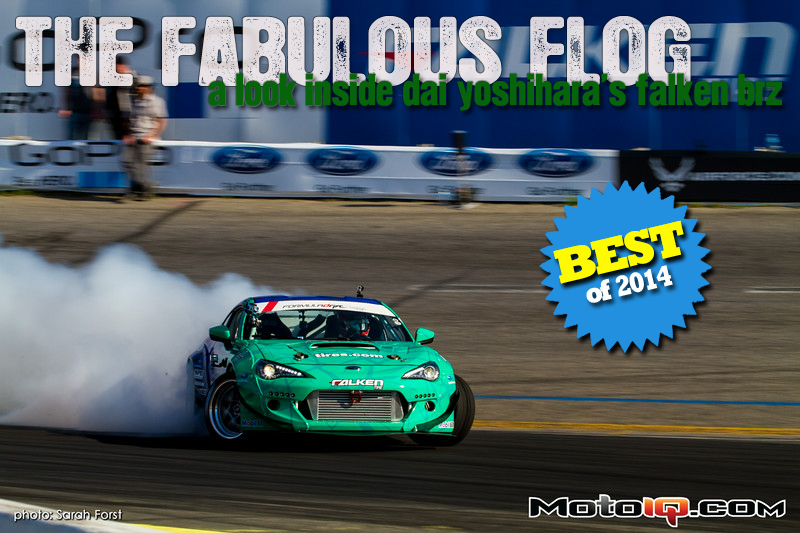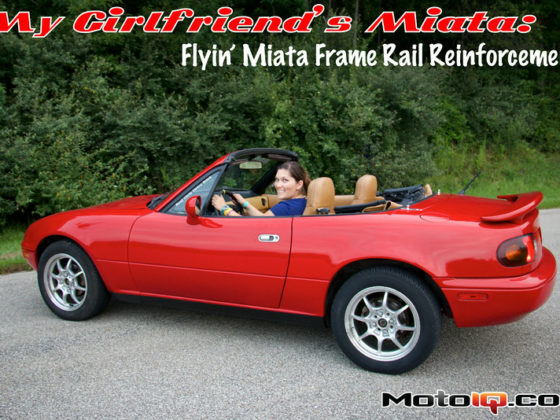,
 The transmission is a 4-speed dog engagement G-Force GSR. A 4 speed is used because the engine has a very wide powerband so it doesn't need a lot of ratios and the width of the gear allowed by a 4-speed allows for a large torque capacity. The GSR has a center railed internal shift linkage for very smooth and direct shifting. No external linkage is needed. The explosion proof bellhousing contains a 7.5″ McLeod borg and beck twin disc clutch with sintered iron friction discs. Borg and beck pressure plates have increasing clamping force when the pedal is out and at higher rpm. The clutch is very trouble free even with the brutal punishment that drifting can dish out.
The transmission is a 4-speed dog engagement G-Force GSR. A 4 speed is used because the engine has a very wide powerband so it doesn't need a lot of ratios and the width of the gear allowed by a 4-speed allows for a large torque capacity. The GSR has a center railed internal shift linkage for very smooth and direct shifting. No external linkage is needed. The explosion proof bellhousing contains a 7.5″ McLeod borg and beck twin disc clutch with sintered iron friction discs. Borg and beck pressure plates have increasing clamping force when the pedal is out and at higher rpm. The clutch is very trouble free even with the brutal punishment that drifting can dish out.  Here is the rear tubular structure that replaces the back of the car. For Formula Drift the stock unibody must remain unaltered from the front most and rear most suspension pick up points to the respective ends of the car. Most pro cars have the unibody and bodywork cut away at these points and replaced with tubular sub frames and fiberglass body panels. This makes the car much more repairable after crashes and saves weight. In the BRZ the rear structure also has a quick access jacking point to speed tire changes.
Here is the rear tubular structure that replaces the back of the car. For Formula Drift the stock unibody must remain unaltered from the front most and rear most suspension pick up points to the respective ends of the car. Most pro cars have the unibody and bodywork cut away at these points and replaced with tubular sub frames and fiberglass body panels. This makes the car much more repairable after crashes and saves weight. In the BRZ the rear structure also has a quick access jacking point to speed tire changes. The rear suspension is fairly straightforward. Most of the links have been replaced by off the shelf Cusco items with spherical bearings. Whiteline braces reinforce the swaybar mounts. Solid bushings of the same dimension as stock replace the rubber subframe bushings. The BRZ/FR-S rear suspension has pretty decent geometry from the factory with better roll center location, toe curve and camber curves than the venerable Nissan S Chassis. The main drawback is a lack of bump travel which has been addressed through the use of a custom shock.
The rear suspension is fairly straightforward. Most of the links have been replaced by off the shelf Cusco items with spherical bearings. Whiteline braces reinforce the swaybar mounts. Solid bushings of the same dimension as stock replace the rubber subframe bushings. The BRZ/FR-S rear suspension has pretty decent geometry from the factory with better roll center location, toe curve and camber curves than the venerable Nissan S Chassis. The main drawback is a lack of bump travel which has been addressed through the use of a custom shock. The rear shock is a KW Motorsports 3-way adjustable coil over. The remote reservoir allows the shock to have a lot of travel with a very short body. The shock has been modified to increase roll resistance without increasing spring rate and to reduce internal friction. The high and low speed compression damping adjusters are found on the reservoir while the rebound adjuster is positioned on top of the shock shaft.
The rear shock is a KW Motorsports 3-way adjustable coil over. The remote reservoir allows the shock to have a lot of travel with a very short body. The shock has been modified to increase roll resistance without increasing spring rate and to reduce internal friction. The high and low speed compression damping adjusters are found on the reservoir while the rebound adjuster is positioned on top of the shock shaft.  A Progress Automotive rear antiswaybar is used. Progress made 3 bars of different diameters to be used and each bar has 3 different adjustment points. The bar has this bend to allow for clearance of the quick change differential back plate.
A Progress Automotive rear antiswaybar is used. Progress made 3 bars of different diameters to be used and each bar has 3 different adjustment points. The bar has this bend to allow for clearance of the quick change differential back plate.  A KW 3-Way front shock is used for a McPherson strut. The KW is an inverted monotube. It uses linear ball bearings between the inner and outer tube to reduce friction as well as other internal modifications to reduce friction. Less friction means more sensitive and accurate damping with less tire shock and more traction. Drift cars are very sensitive to tire shock. You can see the rebound adjuster here.
A KW 3-Way front shock is used for a McPherson strut. The KW is an inverted monotube. It uses linear ball bearings between the inner and outer tube to reduce friction as well as other internal modifications to reduce friction. Less friction means more sensitive and accurate damping with less tire shock and more traction. Drift cars are very sensitive to tire shock. You can see the rebound adjuster here.  The front remote reservoir has the high and low speed compression damping. Having a remote reservoir means that shock travel can be maintained even when the car is low and the shock body very short. You can see the custom front camber plate/upper shock mount. Formula D rules do not allow modifications to the shock tower and this mount was needed to maintain correct king pin inclination and caster when the car had its front track widened while not altering the shock tower and tower top at all.
The front remote reservoir has the high and low speed compression damping. Having a remote reservoir means that shock travel can be maintained even when the car is low and the shock body very short. You can see the custom front camber plate/upper shock mount. Formula D rules do not allow modifications to the shock tower and this mount was needed to maintain correct king pin inclination and caster when the car had its front track widened while not altering the shock tower and tower top at all. 


